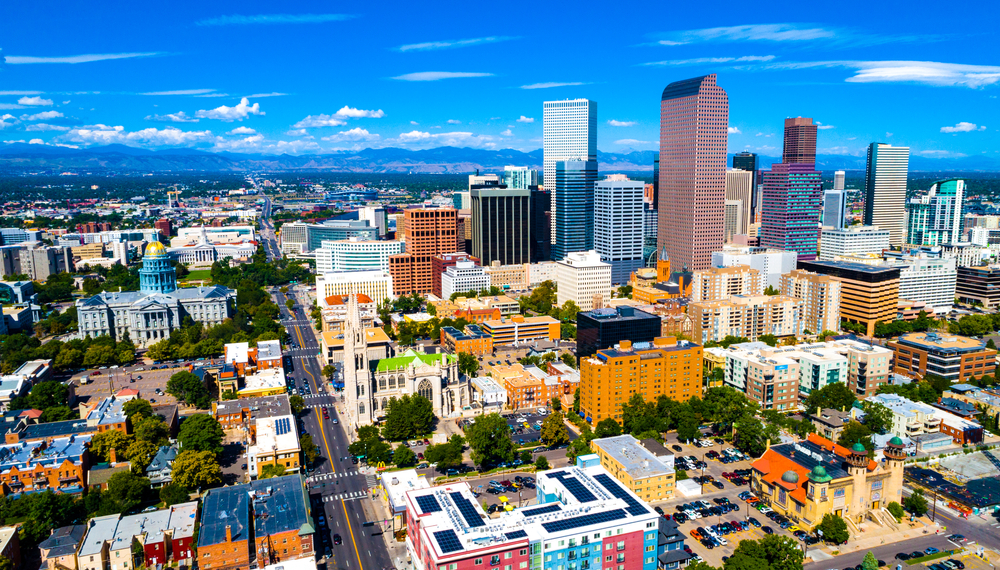Page Navigation:
Denver At-A-Glance
Colorado’s official visitor site describes its state capital as the place “where urban sophistication meets outdoor adventure.” In addition to an amazing ski season, hiking, kayaking, and other outdoor excursions, Denverites enjoy a walkable city full of visual and performing arts, a booming music scene, great breweries and restaurants, museums, and six professional sports teams.
Situated one mile above sea level, the Mile High City boasts a strong economy and has drawn the attention of plenty of startups, entrepreneurs, hipsters, and arts lovers in recent years. With its beautiful mountains, award-winning cuisine, and big-city amenities, it’s no wonder Denver is consistently one of the most popular cities among those moving to Colorado.
Come for the Mountains, Stay for the Culture
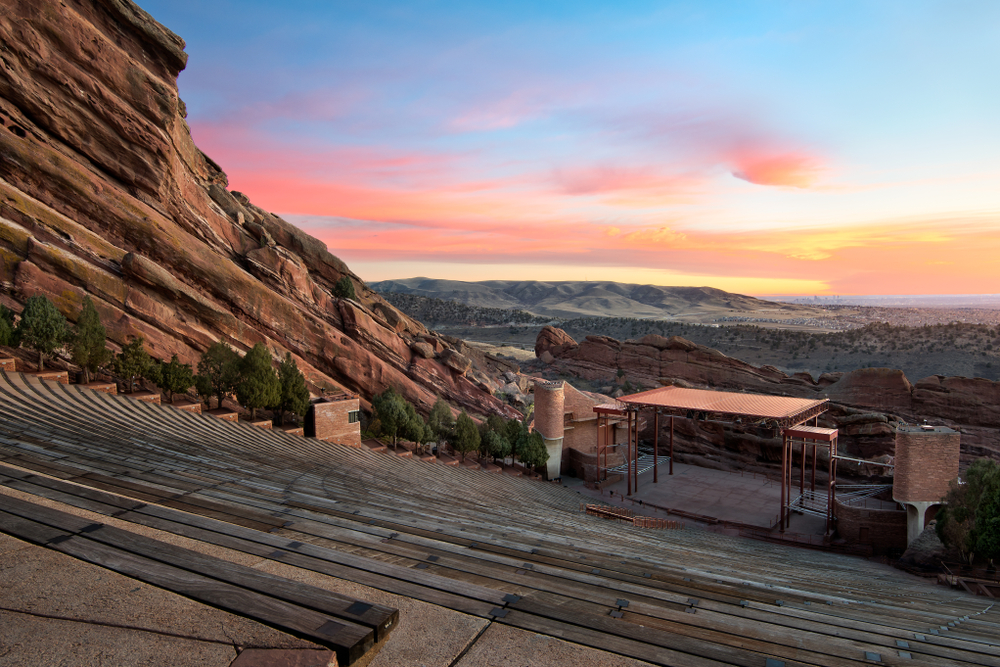
When most people think of Denver, they think of the picturesque landscape. Located in the South Platte River Valley just east of the Rocky Mountains, the city is backdropped by a mountain panorama that stretches 140 miles and features 200 named peaks.
But there’s a lot more to Denver than its views. This metro area has been frequently named as one of the best places for millennials in recent years—in part due to a booming job market, but also due to its thriving arts and cultural scene. There’s no shortage of hot music spots, museums, fun breweries, local shops, and amazing street art.
Music lovers will love seeing a concert at the historic Red Rocks Amphitheater, where big names such as The Beatles, U2, and Jimi Hendrix have played, or the Fillmore Auditorium, a former roller rink turned concert venue. Art and architecture lovers alike may prefer touring the landmark Denver Arts Museum, one of the largest museums between Chicago and California, which features the unique triangular steel-framed Hamilton Building.
Whatever your interest, Denver’s cultural scene truly has a little something for everyone.
Tech Talent Finds a Home in Denver
Denver’s job market took a hit during the pandemic, but it rebounded quickly—largely in part due to the high number of young professionals and businesses drawn to the city over the last couple of decades that have stimulated its steady job growth. While the booming population has led to a rise in the cost of living, slowing growth a bit, Colorado’s capital continues to add tens of thousands of jobs annually in a diverse array of industries, including tech, finance, health, aerospace, and marijuana.
Following a 23 percent growth in its tech workforce between 2016-2021, Denver moved up two spots in the CBRE’s 2022 report due to the wide availability of tech jobs and tech talent. Of course, since its legalization over ten years ago, the marijuana industry is another major driver of the Denver economy, annually pumping in hundreds of millions. Other large companies with a presence in the city include DaVita, RE/MAX, the Boeing Company, and Lockheed Martin.
The unemployment rate in Denver is 3.3 percent, slightly lower than the national average.
Beauty Comes with a Price
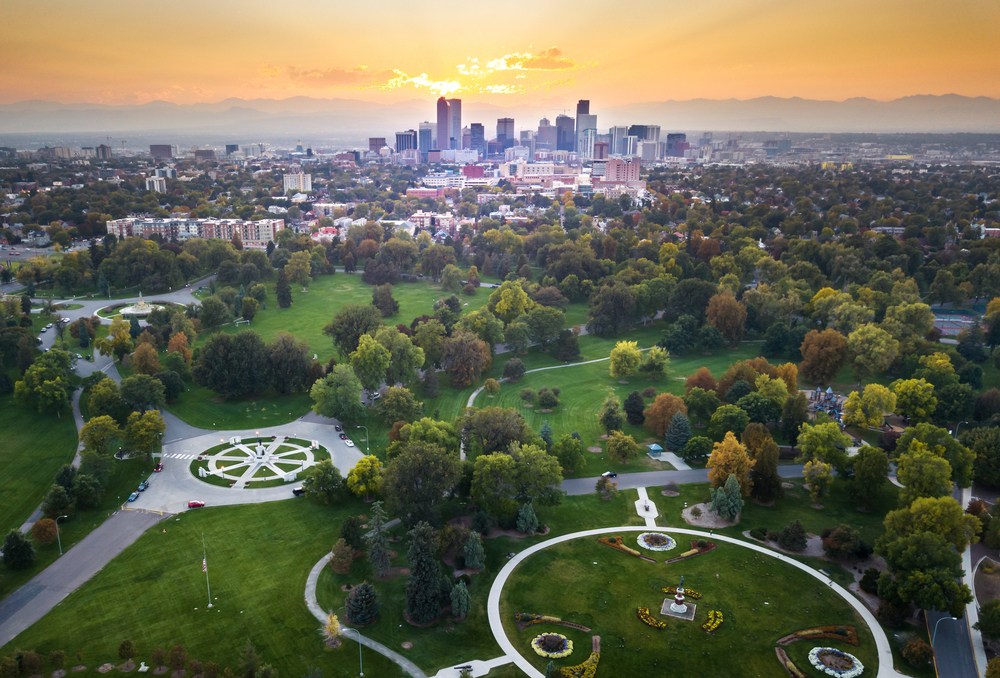
Like the rest of the U.S., the cost of living in Denver has gone up in recent years due in part to inflation. Additional impact stems from the steady flow of new residents and businesses into the state. Colorado is one of the fastest-growing states in the U.S., and Denver’s population has increased 17 percent over the last ten years. The city has seen a population increase of over 1 percent annually for several years now, even throughout the pandemic.
Despite the cost of living in Colorado being 12 percent higher than the national average, the median annual income is also higher. According to the 2020 census, the median household income in Denver was $72,661, about $5,000 above the national median income at the time.
This is good news for buyers and renters, as Denver has felt the impact of the housing market surge. According to Zillow, the typical home value in Denver was $626,311 in September 2022, up 12.1 percent from the same timeframe a year prior. Nearly 50 percent of homes sold were over list price, with about a third under.
Not ready to buy? For those looking to rent, Axios named Denver as the country’s 9th most expensive metro, with a median rent of $2,520. That’s an increase of 44.1 percent from August 2021. As with the rest of the country, a large factor in surging rent prices is the number of would-be buyers who are stuck renting, creating a low inventory with high demand.
Thankfully, experts suspect buyers and renters may see some relief as nationwide rents were down in July 2022 for the first time since November 2021.
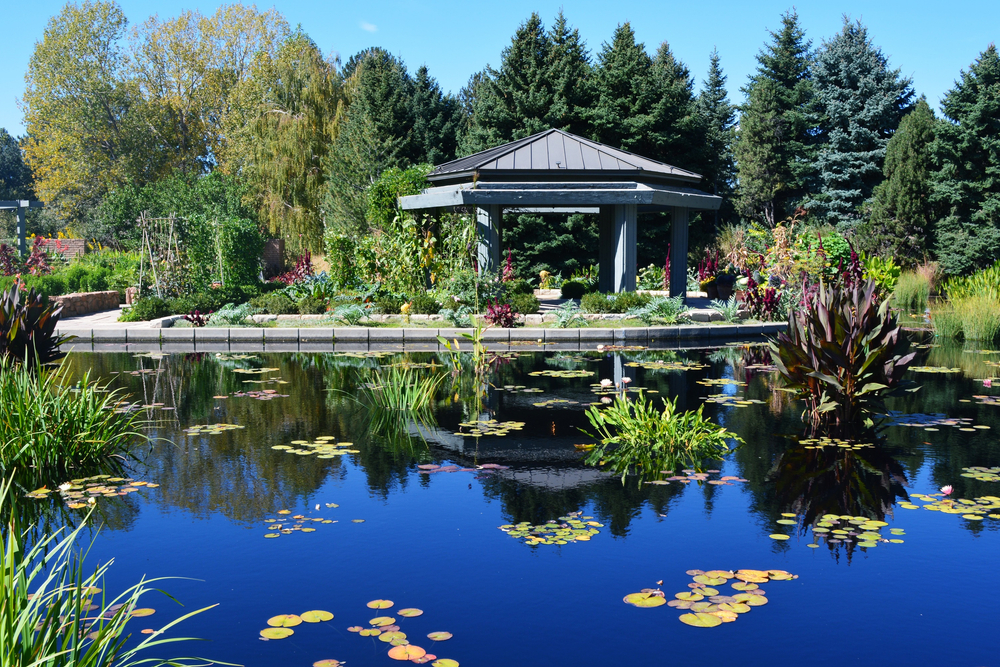
Neighborhoods with Distinct Features and Feels
With 78 official neighborhoods (and plenty of unofficial neighborhoods), folks flocking to Denver will find a variety of living options to fit a variety of tastes. Each neighborhood has its own look, feel, and types of attractions—some are perfect for students and young professionals seeking nightlife while others are full of greenery and trails for those who prefer a quieter lifestyle.
Here are a few of highly recommended neighborhoods in Denver:
CAPITOL HILL
As one of Denver’s oldest neighborhoods, Capitol Hill features many late-Victorian era mansions that have been converted to apartments, condos, and townhomes. Despite its stunning architecture and central location, Capitol Hill is considered affordable and is loved by new and long-time residents alike.
LOWER DOWNTOWN
Technically, Lower Downtown, nicknamed LoDo, is an unofficial neighborhood that overlaps parts of the Union Station and Five Points neighborhoods. Featuring a vibrant nightlife and several of the city’s biggest attractions, including Larimer Square and Coors Field, it’s considered perfect for those seeking the big-city, high-rise living experience.
LOWER HIGHLAND
Lower Highland—or LoHi—is another unofficial neighborhood claimed by the locals. Although it is one of the most expensive (and most beautiful) neighborhoods in Denver, LoHi is close enough to downtown while still offering a quiet, traditional neighborhood feel that’s great for families. Bonus: LoHi also has some of the best dining in Denver.
RIVER NORTH ART DISTRICT
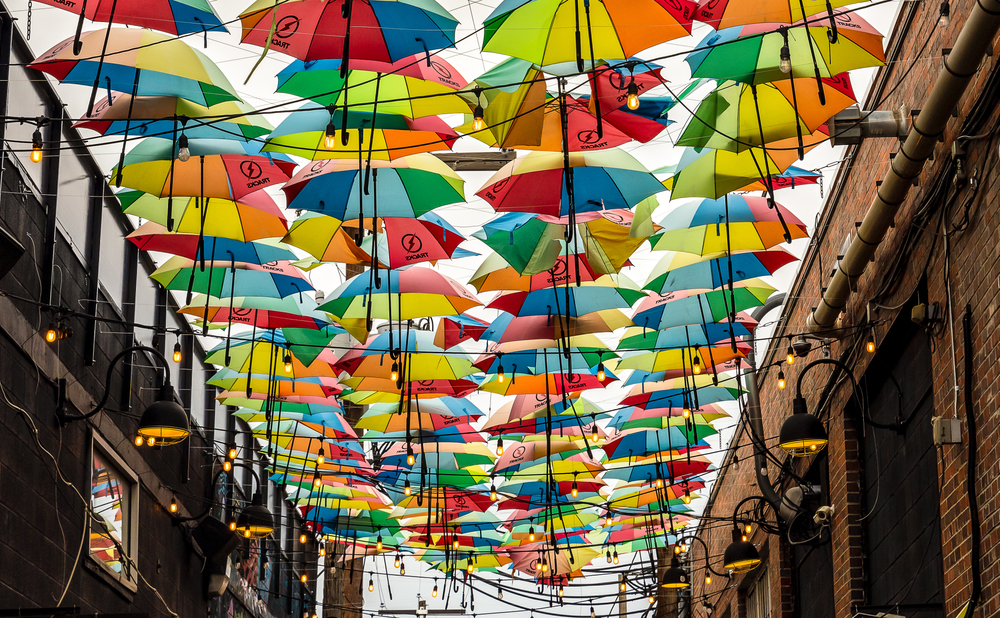
Adding another contraction, the River North Art District, also known as RiNo, has been undergoing redevelopment that brings art to the forefront. Old warehouses have been turned into music venues, galleries, coffee shops, and local restaurants. RiNo is perfect for art lovers, foodies, and lovers of the nightlife.
WASHINGTON PARK
Considered a happy compromise between the city and the suburbs, Washington Park is one of Denver’s safest neighborhoods and is great for families seeking a quiet, residential area. There are plenty of single-family homes, and its namesake, Washington Park the park, features biking trails, lakes, and an expansive lawn.
Other neighborhoods to include in your Denver home search:
- Sunnyside
- Golden Triangle
- Central Park (formerly known as Stapleton)
- Five Points
- Cherry Creek
Big City Traffic with Plenty of Public Transportation
Like any major city, traffic in Denver can be heavy during morning and afternoon rush hours. The influx of new residents combined with its proximity to the Rockies also lend to the congestion, with eager skiers sometimes clogging the roads on the weekends. However, Denver is considered very walkable and the bike-sharing program, B-cycle, is a great option. You can grab a bike from one of 88 stations throughout Denver.
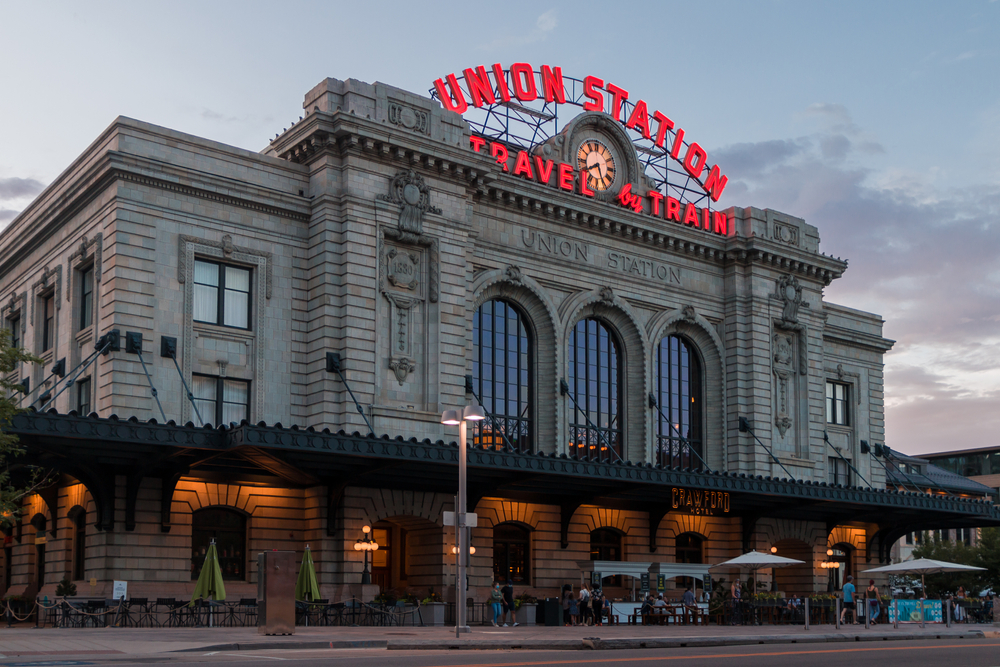
The city has also invested in an extensive public transportation system, including the public bus system and a light rail line which can get passengers from downtown Union Station to Denver International Airport (DIA) in under 40 minutes. Its 12 rail lines extend 113 miles. With 78 stations to hop on and off, it’s no problem getting where you need to go.
A City of Educated Professionals
While Denver is described as a laid-back city with its residents tending to “dress down,” it’s regularly listed as one of the most educated cities in the U.S., ranking 14 out of the 150 evaluated in 2022. About 55 percent of residents hold a bachelor’s degree or higher, with 22 percent having obtained a post-grad degree.
For those moving with kids and teenagers, Denver has 157 public schools and 22 private schools. The city and its surrounding metro area are also home to several universities and colleges, including University of Denver, the oldest private institution in the Rocky Mountain Region, and University of Colorado, Denver.
Denver’s Weather Offers a Little Something for Everyone
Positioned just east of the Rockies and right in the middle of Hail Alley, Denver’s weather can vary significantly. Because it’s not unusual to go from snowflakes to 70 degrees and sunny (except maybe from June through August when the flakes stay away) layers are a must.
On average, Denver is one of the country’s snowiest big cities (population of over 500,000). The good news is that it also gets about 245 sunny days every year with temperatures in the winter sometimes reaching up to 60 degrees, so you can enjoy time outdoors all year long.
Overall, residents consider the weather in Denver to be nice. With an arid climate, the summers are hot but not humid and while there can be large snowstorms, that white stuff doesn’t stick around too long.
One more note: While Denver isn’t in the Rockies, still expect to feel the effects of the altitude. If you decide the Mile High City is the one for you, remember those beautiful views come with thinner air that may require some adjustment time.
10 Can’t-Miss Things to Do in Denver
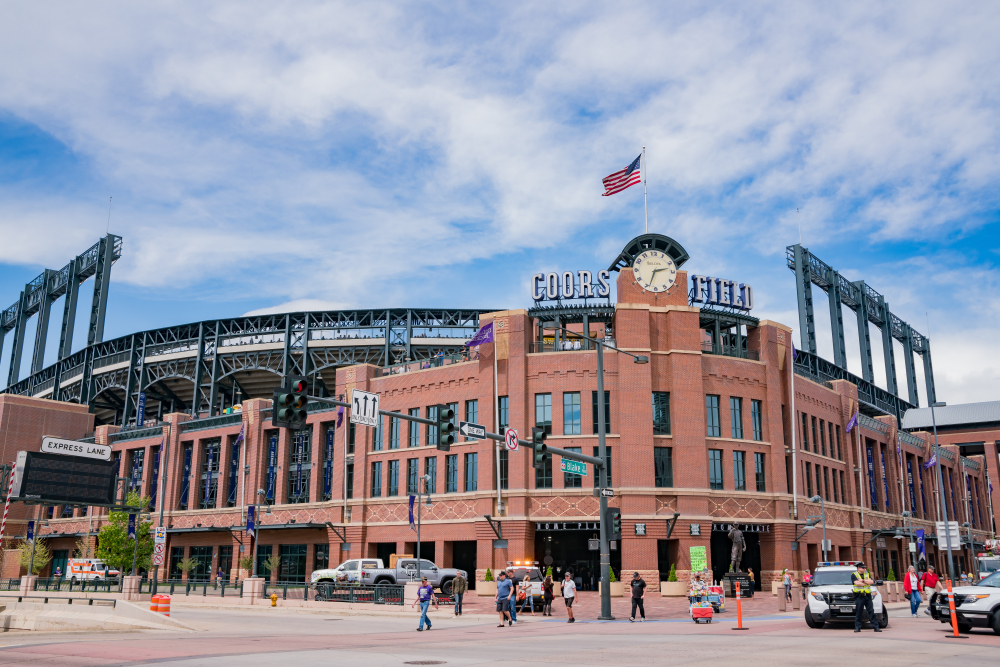
Denver isn’t just about great skiing. The city has plenty of museums, amazing cuisine, the Denver Broncos, and more. Here’s a list of 10 off-the-slope must-dos in Denver:
- Experience fine dining and great shopping in Larimer Square.
- Hike the trails at Red Rocks Park or catch an outdoor concert in its famed amphitheater.
- Visit the beautiful Denver Botanic Gardens to relax with a beer or have a picnic.
- Immerse yourself in history at Denver’s Union Station, still offering Amtrak and bus service.
- Bend your mind at Meow Wolf’s immersive and interactive psychedelic exhibit, Convergence Station.
- Grab a bite to eat or drink at RiNo’s Zeppelin Station.
- Get inspired at the Kirkland Museum of Fine and Decorative Art.
- Catch a Broncos game or take a tour at Empower Field at Mile High.
- Root for the Colorado Rockies at Coors Field—or grab a local brew on the Rooftop while you take in some amazing views of the field and the city.

